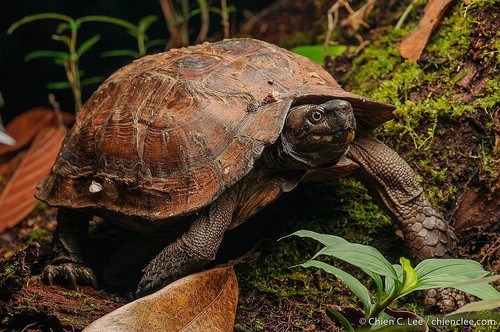
Spiny Turtle
The Spiny Turtle, Heosemys spinosa, features a uniquely spiked shell, blending seamlessly into its rainforest habitat. This elusive turtle aids in seed dispersal, feeding on fruits and invertebrates, and is a rare gem of Southeast Asia's lush ecosystems.
20 years
Lifespan
1.5 - 2.0 kg
Weight
Length: 18 - 22 cm; Height: 9 - 11 cm
Size
Brown, Red, Orange, Beige
Color
3 mph
Top Speed
Endangered
Conservation Status
Decreasing
Population Trend
Characteristics
Heosemys spinosa, also known as the Spiny Turtle, is native to Southeast Asia's tropical rainforests. It is distinguished by its spiky, saw-toothed shell, which provides camouflage among forest debris. This shy, semi-aquatic turtle primarily feeds on fallen fruits and invertebrates, playing a role in seed dispersal.
Distribution Range of the Spiny Turtle
Heosemys spinosa, commonly known as the spiny turtle, is native to Southeast Asia. It is found in the countries of Thailand, Malaysia, Indonesia (particularly in Sumatra and Borneo), and the Philippines.
Spiny Turtle's Habitat
Environmental Conditions
The spiny turtle typically inhabits tropical and subtropical forests with abundant leaf litter and moist conditions. These environments are characterized by high humidity, dense canopy cover, and a warm climate with temperatures generally ranging from 20°C to 30°C (68°F to 86°F).
Ecological Niche
Heosemys spinosa is a forest-dwelling species that prefers the forest floor where it can find cover under leaf litter and fallen logs. Its ecological niche involves a diet of fallen fruits, vegetation, and small invertebrates. The spiny turtle's spiny shell provides camouflage and protection against predators in its dense forest habitat.
Copyright @ Nature Style Limited. All Rights Reserved.
 English
English